How to Love Many in Many Ways is a multi-faceted project with many moving parts—a collection of games, exercises, and playful texts that depart from expanded notions of “love”. Developed with eleven authors and over the course of two years, the main driving ideas of the project have significantly changed, developed, or been revised by the authors. In this text, we try to pose eight basic question words, and think of the project through them: Why, What, How, For Whom, Where, When, Who, and From Where. Those eight entry points allowed for us to expose the unspoken parts of the project, starting from its early moments of conception, going through the different layers of doubt and questioning, until it finally reached its current form. We consider this to be a walk-through, a guided tour, through which, we ask you, the reader, to embark on this journey to explore the undercurrents that shaped How to Love Many in Many Ways. The project started as we—Engy and Garbiel— worked on some games and exercises responding to the titular question and then sent out open invitations to contributors, friends, and acquaintances—people whose practices we admire. Now, we think of this text as a chance for us to revisit and reflect, and to retrospectively try to understand the different components of this project.
How to Love Many in Many Ways
1. Why
“My work as a cultural critic offered me a constant opportunity to pay close attention to everything the mass media, particularly movies, and magazines, tell us about love. Mostly they tell us that everyone wants love but that we remain totally confused about the practice of love in everyday life.”—bell hooks, all about love, 2000.
What if we start practising love not only within our romantic relationships, our families or with our friends but with Ourselves, Other/s and Other Other/s? What happens if we understand love, not only as something that concerns us privately but also as something that we can practise collectively. What if we start to understand love not as something that happens to us, but also as something that we can actively practise. And what would a collective practice of love towards Ourselves, Other/s, and Other Other/s eventually look like?

How to Love Many in Many Ways, Knap Centar, Zaghreb (2023, photo by Ivor Lapić)
2. What
How to Love Many in Many Ways is a set of games and exercises that playfully challenge the way we see and practise love and with whom we share it. Starting with the question of “How to Love Many in Many Ways” we developed 12 exercises that can be played with Yourself, Other/s, and Other Other/s. The players can be objects, plants, animals or people that share a completely different worldview or come from a different context.
Believing that the question how to love many in many ways should be addressed by many, Gabriel and Engy invited artists to respond to the question “How to Love Many in Many Ways”. Each of the 9 other artists developed an exercise or game that offered ways of practising love that you might have never considered before.
The response from contributors varied as did their diverse disciplines and backgrounds that range from the artistic to the scientific, and from the somatic to the satirical:
Engy Mohsen and Gabriel Hensche, artists (Cairo/Berlin), kicked off with the namesake How to Love Many in Many Ways, a set of exercises that invite you to enact many rituals with many options for potential players: Yourself, Other/s, Other Other/s.
Eliana Otta, artist (Lima/Athens), responded with Rehearsing Horizontalities, a set of exercises that create scenarios in which players re-examine their relationship with others by playing with their spatial, choreographic, and acoustic awareness, all while maintaining what she calls a “horizontality pact” to re-examine our relationships with others.
Eleonora Toniolo, interdisciplinary designer (Berlin), responded with NOI Game, a card game that attempts to challenge usual modes of communication by playing with individual and collective silence.
Ingo Niermann (The Army of Love), writer and artist (Basel/Berlin), responded with Falling in Love with the World, an exercise that directs a group to overcome aversions and extend notions of love and care to others or objects.
Mohamed Al Bakeri, artist (Cairo/Sierre), responded with The Things You Do for Love, a board game that invites players to think of love as a material need and a commodity, drawing from the world of online dating.
Petra Mrša, artist and photographer (Berlin/Zagreb), responded with Shivering Throats, Breaking the Walls, playing with alternative notions of intimacy and encounter, presence and absence, and unconventional modes of communication and exchange.
Philip Ullrich, artist (Bern/Zürich), responded with Take That Loving Grace, a game in which aspects of love such as the similarities and differences between parties as well as the power struggles that are at play can be explored in pointed ways.
Rania Atef, artist (Cairo), responded with Bad Mother, a card game that critically and sarcastically scrutinises the societal gaze on maternal love, mothers’ domestic performance, and the criteria for a “good mother.”
Raúl Hott, artist and architect (Santiago), created Total Body (RADIANCE), an invitation to understand radiance – an experience of new ways of relating to affect and affection by interacting with all living beings and reconnecting with our planet.
Shahd Omar, somatic practitioner (Cairo), responded with Embodied Encounters, a playful attempt to redefine consent as the process of establishing agreements, and how to communicate it beyond verbal exchanges.
III. How
Play by Yourself
Play independently and for free: All games and exercises are designed for you to print and play at home or wherever you feel comfortable playing.That means that the design of all games and exercises is based on the format of a standard A4 paper. You can download the games and exercises for free on howtolovemanyinmanyways.com and print them easily on regular A4 paper in black and white or in colour.
Play with Us
Book a game master: If you want a guided workshop or play session provided by the artist who authored the game, feel free to reach out to us by writing an email to info@howtolovemanyinmanyways.com
Until now we had almost 30 guided workshops or play sessions in different institutions and contexts. You see the documentation of those activations here: How to Love Many in Many Ways (News)
IIII. For Whom
The games and exercises are designed for everyone inside and outside of the art world who is interested in playfully practising a love relationship with themselves, a partner, a group of people, or Other Other/s. The games are designed for common use and can be played within your private or non-commercial work environment. For instance, next to playing it with audiences in museums, festivals, residencies or educational environments, they can be played with employees of an NGO, or with the neighbours of a fallow land in an urban space. For instance, someone told us that they did the exercise “How to be active and passive at the same time” with their parents because they had a conflict.
We chose to publish the games under a Creative Commons License: Attribution - NonCommercial - ShareAlike (CC BY-NC-SA). This licence lets others remix, adapt, and build upon your work non-commercially, as long as they credit the author and licence their new creations under the identical terms.
V. Where
We have always imagined the games as something that can be played in an art museum, but also in a public space; the park, a beach, a square, or any place you feel comfortable. Here a few examples:
As mentioned earlier, the project has been realized so far in more than 30 different iterations. The nature of them varied greatly. The creation of contexts similar to the game structures allowed for the performative element of the project to allude to situational potentialities. Through the creation of different formats, we had hoped to create events that engage with its content, like having performative game session where participants form a “horziontlity pact” for the full duration, or realize one game in a more material life-sized format and put on display some documentations from its activation, or restage an encounter once again through constant reflections with participants. We approach the game sessions much like how we approach the project itself, as an attempt to collectively create a layering of affective and physical elements to open space for subjectivities and relations between bodies, objects, texts, and printed matter.
In July 2022, Gabriel Hensche, Petra Mrša, Philip Ullrich took part in the Intensive Weekend organized by School of Commons in Zürich. During that period, they organized and led parallel play sessions of their three games, namely How to Love Many in Many Ways, Shivering Throats, Breaking the Walls, and Take That Loving Grace, respectively. They were joined by the cohort of School of Commons, online and on-site, who took part in the games as well as the constructive feedback round that took place afterwards and helped radically restructure the games while they were still in progress.


Around the same time in July, Engy Mohsen took part in the eponymous exhibition How to Love Many in Many Ways in Iron Velvet Gallery in New York. The exhibited work included a selection of three out of twelve exercises that one can perform and interact with to enact the feeling of falling in love—and possibly, out of love. The games involved physical touch, movement, and relaxation. The game can be played by anyone visiting the space. Instructions and space for the game is prepared for visitors. Alongside a wooden board of three parts, that is placed centrally on the floor with a revolving drum stick, the work also included three large-scale play cards as well as polaroids documenting the interaction of the visitors on the opening night.

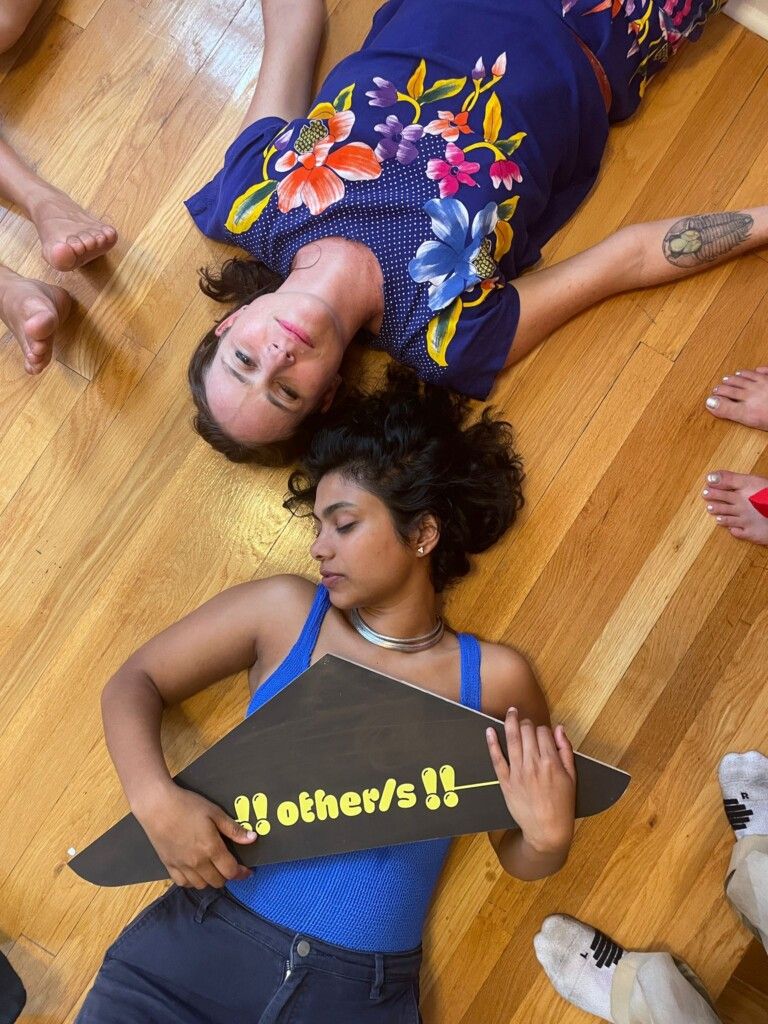
Later in April 2023, Ingo Niermann and Engy Mohsen took part in the program Proto-Club4: Timing-Out by Shedhalle in Zürich. Their contribution consisted of public and private game sessions of the games Falling in Love with the World by The Army of Love (Ingo Niermann and Michelangelo Miccolis) alongside Maria Sabato, and Rehearsing Horziontalities by Eliana Otta, another project contributor. One of the game sessions by Niermann was a long-format session that was shot on film, to be screened later at the same venue.
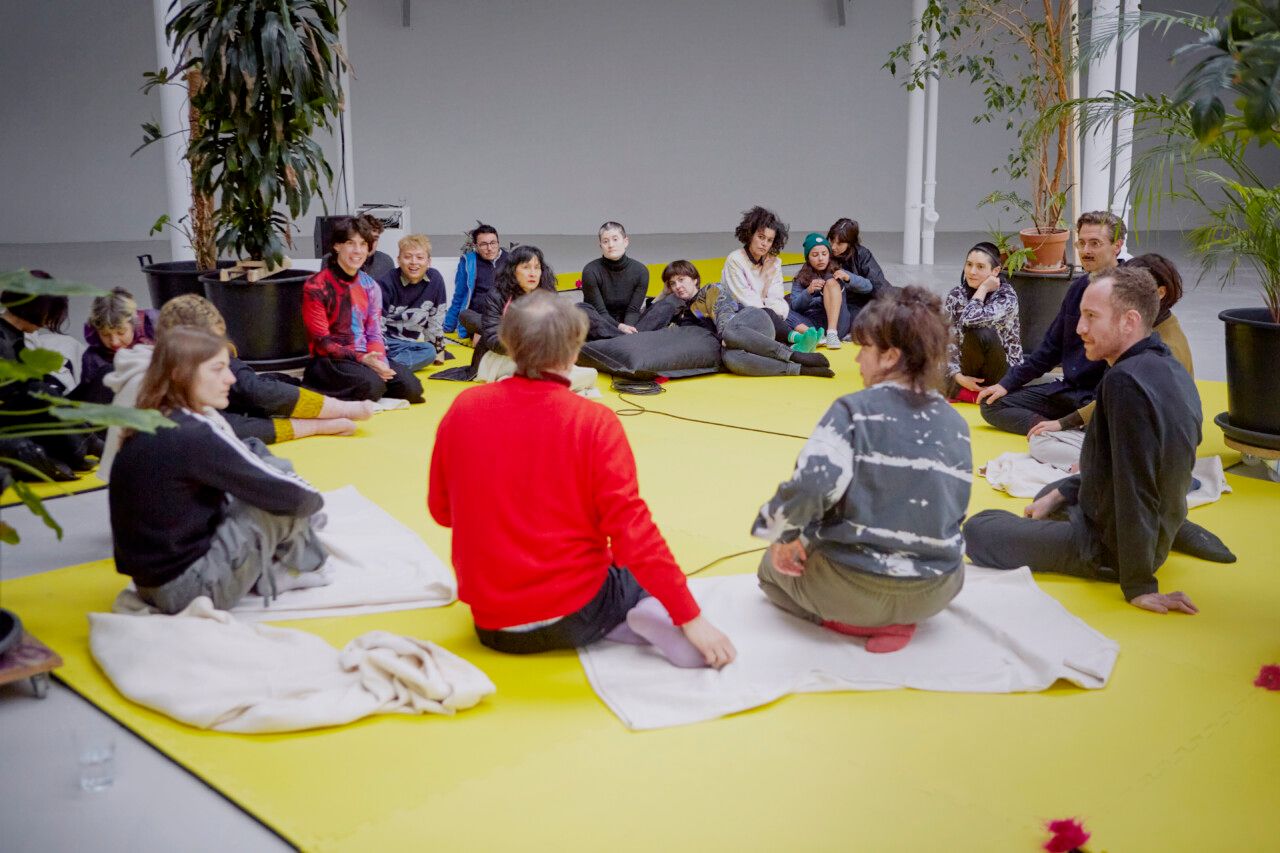
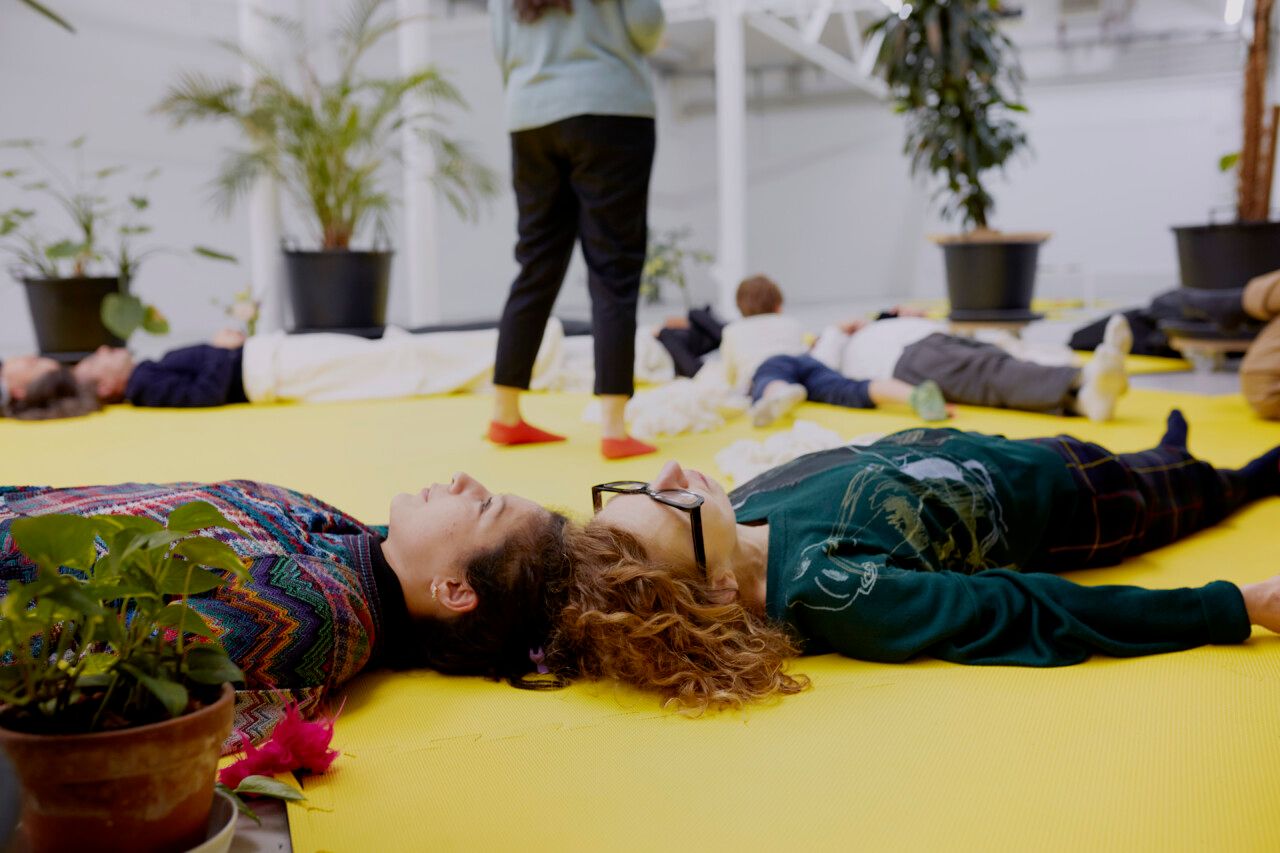
Gabriel Hensche and Eleonora Toniolo took part in "Commopoly", a participatory public art program by the Curatorial Collective for Public Art, which took place from March - July 2023. Together, they devised a concept and spatial arrangement to facilitate the playing of two games, namely How to Love Many in Many Ways and NOI Game, in public spaces.
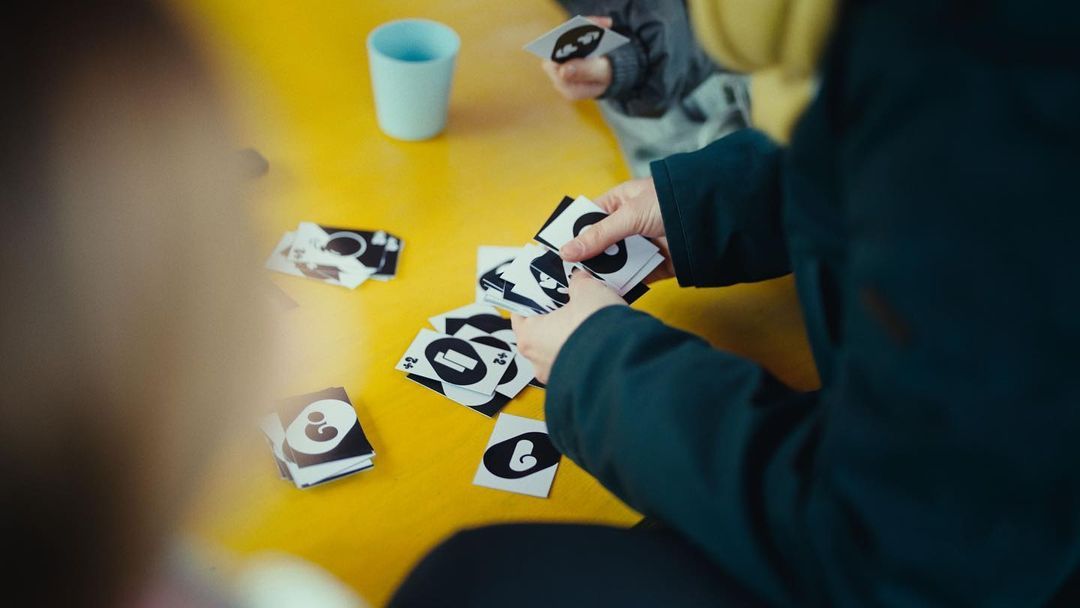
NOI Game, Commopoly by The Curatorial Collective for Public Art, Mühlenbecker Weg (Spiel/Feld Marzahn), Berlin (2023, photo by Edgard Berendsen)
Simultaneously Gabriel Hensche and Pertra Mrša presented the games How to Love Many in Many Ways and Shivering Throats, Breaking the Walls in a gallery setting, as part of the “Crta za Beskraj” performance festival at Knap Centar in Zagreb. "Shivering Throats" took the form of a participatory audio installation, featuring 4 headphones, MP3 players, and instructions. Meanwhile, How to Love Many in Many Ways was a participatory installation featuring plants, a plateau, a carpet, game board, cards, cushions, pins, and a stick. The audience had the opportunity to engage with these elements independently or through guided workshops led by the artist. Additionally, Eliana Otta's Rehearsing Horizontalities was incorporated as a workshop, led by the festival's director.

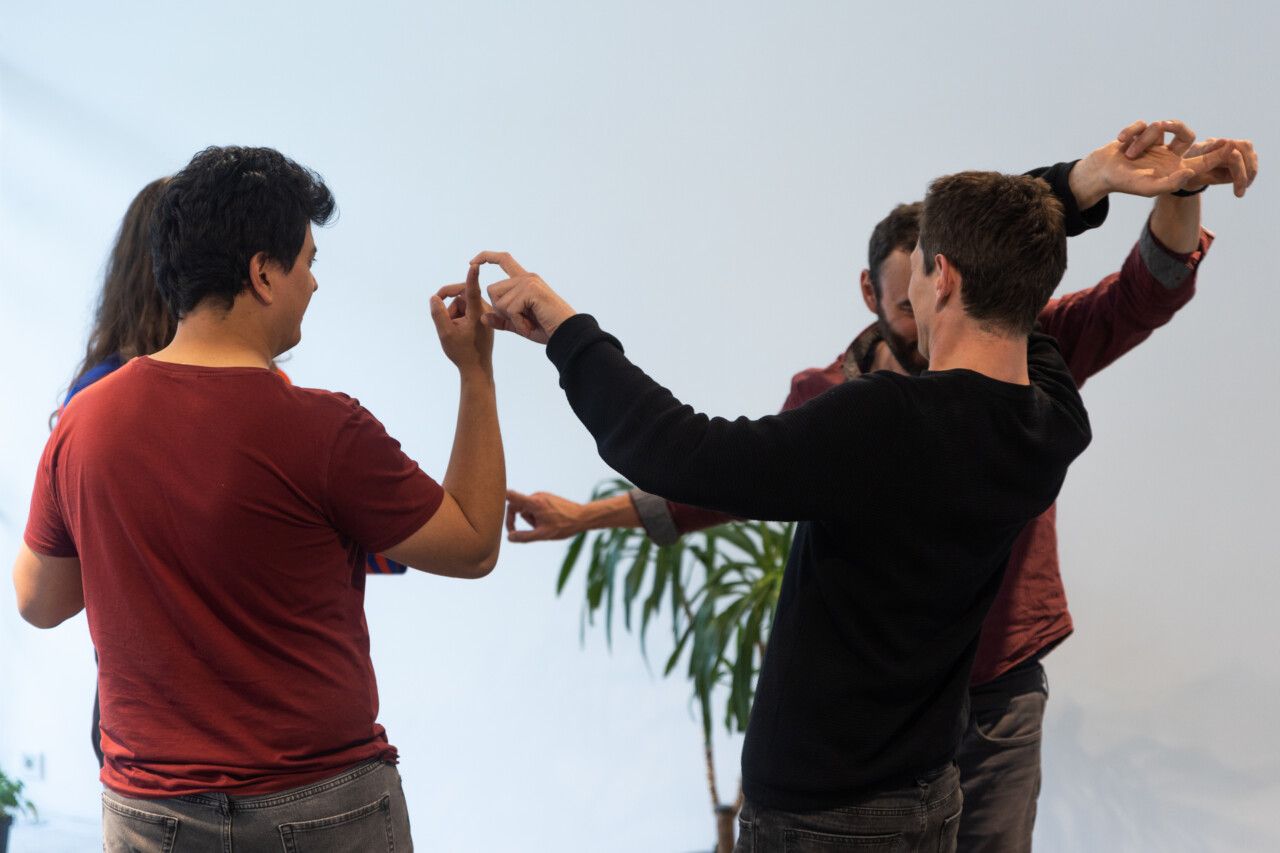
You can learn more about past and upcoming events near you, here: How to Love Many in Many Ways (News)
3. When
These games are meant to be played whenever you find yourself in moments of boredom or curiosity. They offer an open invitation to step beyond your comfort zone, explore new experiences, and forge playful connections. Some games are wonderfully simple and can be played within minutes almost anywhere, making them perfect for quick joyful explorations. For example, How to Become a Moving Mirror provides an instant opportunity for playful non-verbal communication and connection. Other games require a bit more time, space and a group of players. Take Rehearsing Horizontalities as an example, where lying on the floor and embracing a slower pace allows for a longer exploration. While Bad Mother may bring extra laughter for caretakers, the game is not limited by age or life stage. The games, at large, can be enjoyed at any point in your life's journey, offering a chance for introspection, growth, and connection whenever you feel called to play.
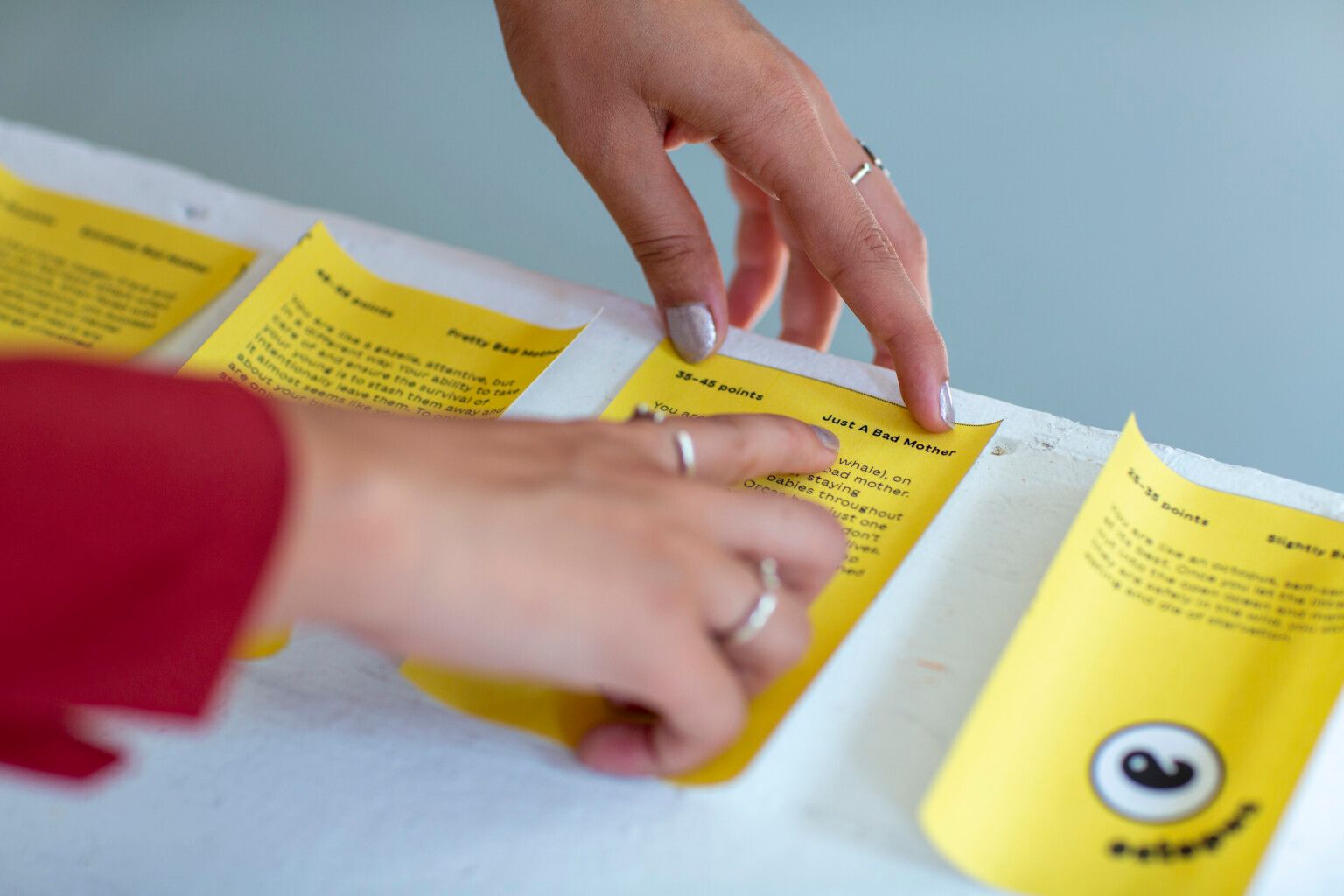
Bad Mother game results, Art Omi open studios, Hudson, New York (2022, photo by Molly Stinchfield)
4. Who
How to Love Many in Many Ways grew out of an ongoing, joyful and partly experimental online conversation between Engy Mohsen and Gabriel Hensche. Later on, they extended the conversations with Eleonora Toniolo, Eliana Otta, Ingo Niermann (The Army of Love), Mohamed Al-Bakeri, Petra Mrša, Philip Ullrich, Rania Atef, Raúl Hott, and Shahd Omar. Others, along the way, supported the project in so many ways, including Ismail Fayed, Engy Aly, Jenifer Evans, Maha Maamoun, Tara Lasrado, Georgia Kotretsos, Clara Neugebauer, Nicola Unfer, Mays Albaik, Peter Fares, Didi Liebold and the team and peers of School of Commons.
We would like to thank all the participants for the moments of play and extended discussions, and would like to express our gratitude to all the players who had the courage to step into the different articulations of this project.
For full acknowledgments, you can read: https://engymohsen.com/about-how-to-love-many-in-many-ways
VI. From where
We were inspired by many, in many ways. Among which is:
- The 36 Questions That Lead to Love by Arthur Aaron and Elaine Aron
- Alexandra Kollontai
- bell hooks
- Center for bodywork
- Ida, our 10 year old niece
Recognizing that the authors of the games and exercises did not conceive their ideas in isolation, we were intrigued to explore the connections, encounters, concepts, and objects that stimulated the development of their game. We extended an invitation to them, asking them to share a love story intertwined with their game—an account of reference materials and processes that shaped their contributions. Together with HumDrum Press, we worked on a publication where you can encounter narratives, images, text fragments, and drawings that captivated the authors of How To Love Many In Many Ways. In its pages, you can uncover fragments and mementos that mark the inception of a relationship between something and an individual's ability to perceive, be moved by, and draw inspiration from that very thing.

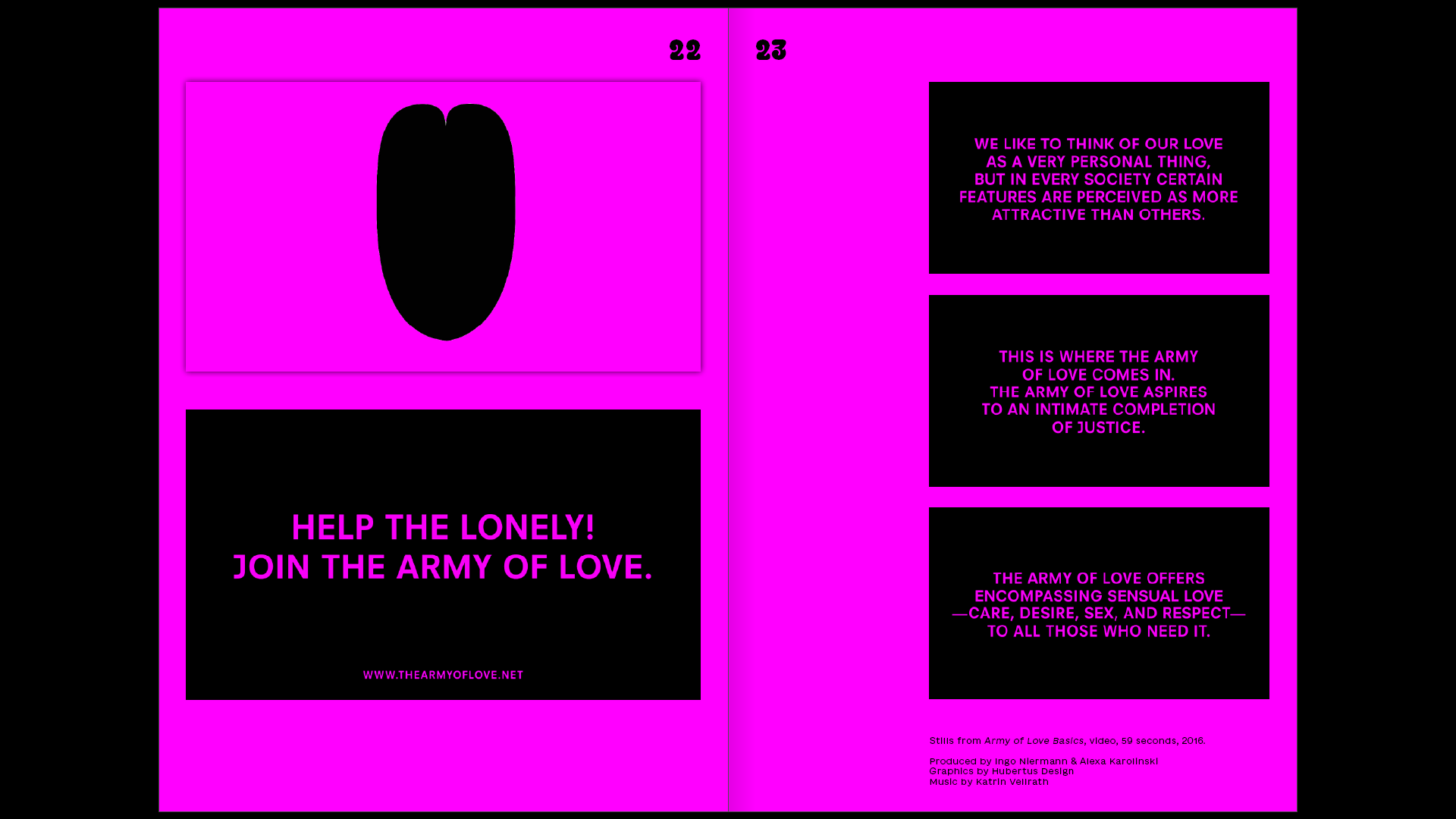
Engy Mohsen
Engy is an artist and curator who lives and works between Zürich and Cairo.
Gabriel Hensche
Since 2022, Gabriel has been part of the leadership team at the School of Commons, Zürcher Hochschule der Künste (ZHdK), and oversees the Peer Learning Program.
Contributors: Eleonora Toniolo, Eliana Otta, Ingo Niermann (The Army of Love), Mohamed Al-Bakeri, Petra Mrša, Philip Ullrich, Rania Atef, Raúl Hott, Shahd Omar. Edited by Ismail Fayed, proof-reading by Jenifer Evans, visual identity by Engy Aly.